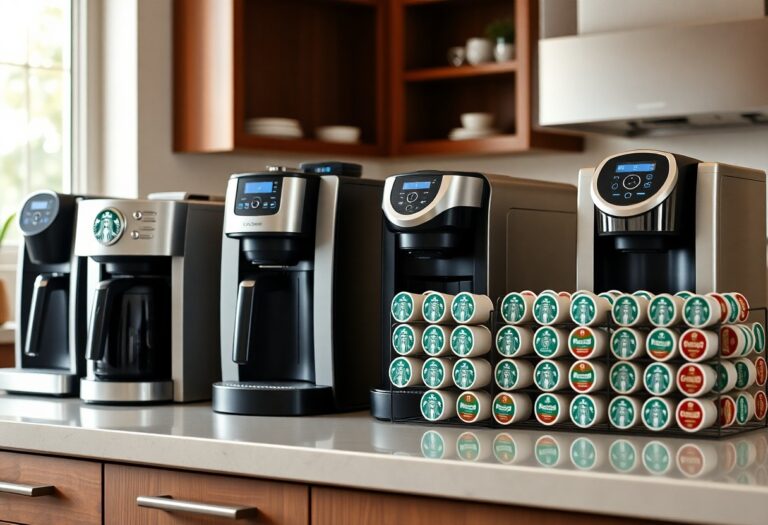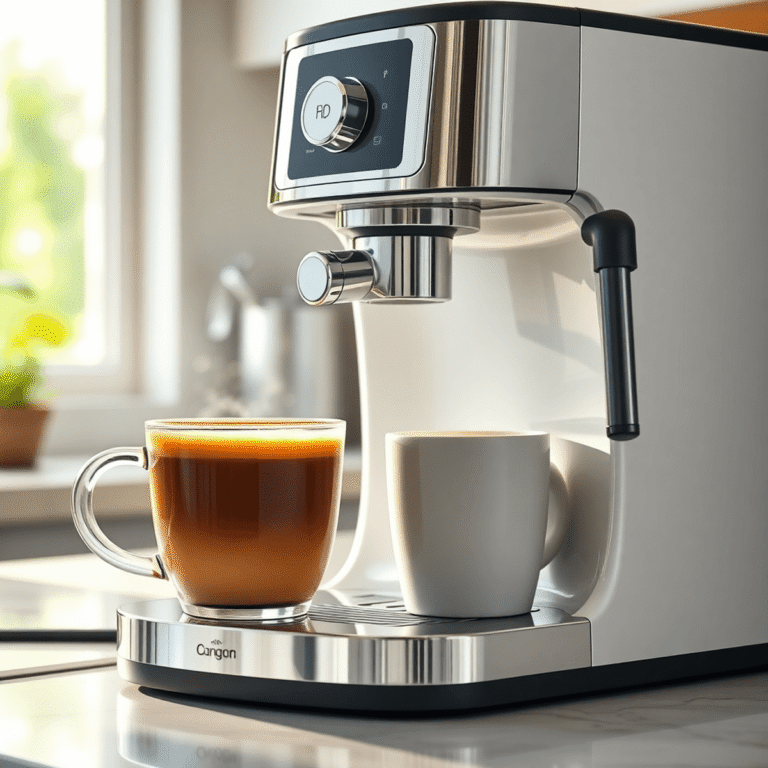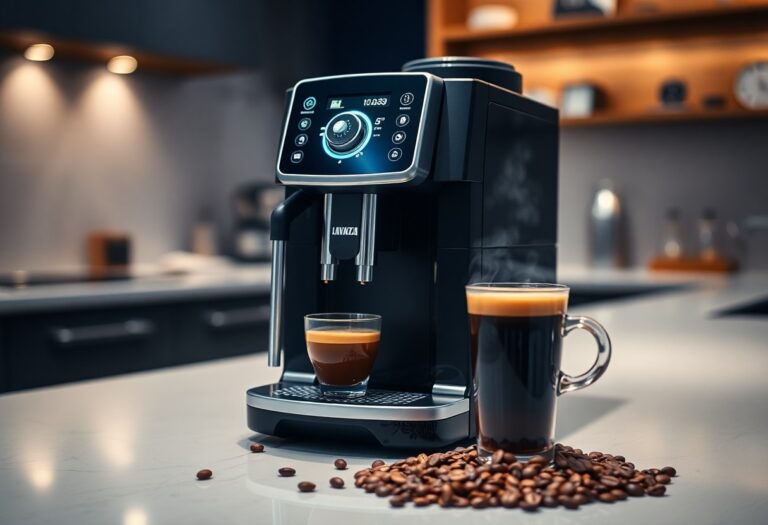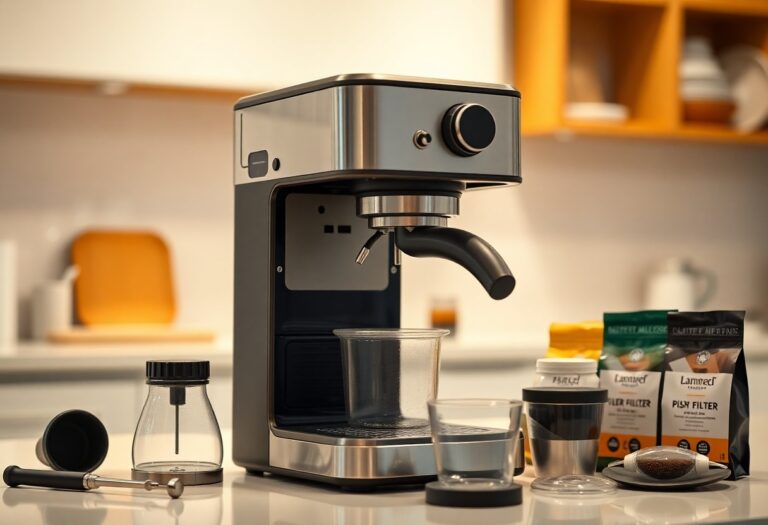Which Coffee Machine is Best: Comprehensive Comparison
With so many options available, finding the best coffee machine can be overwhelming. Choosing the right one is important because it greatly affects your daily coffee experience.
In this detailed comparison, we will explore the different types of coffee makers and their specific features and functions. We will look into drip coffee makers, espresso machines, pod machines, bean-to-cup machines, manual brewing methods, cold brew makers, and more.
By understanding the details of each type, you will be able to make a decision that fits your preferences and lifestyle. Join us as we go on this journey to find the perfect coffee machine for you.
Understanding Different Coffee Machine Types
Coffee machines come in various forms, each designed to match specific brewing preferences and lifestyles. Understanding these types helps you identify the best fit for your daily coffee ritual.
1. Drip Coffee Makers
Ideal for those who enjoy multiple cups of coffee with ease. They excel at brewing larger quantities and often feature programmable settings to simplify mornings.
2. Espresso Machines
Cater to espresso enthusiasts seeking control over shot quality. Options range from semi-automatic models that require some skill, to super-automatic machines offering hands-off convenience.
3. Pod Machines
Focus on speed and simplicity by using pre-packaged coffee capsules. Great for quick single servings but with limited customization.
4. Bean-to-Cup Machines
Combine grinding and brewing into one automated process, ensuring fresh coffee with minimal effort. Perfect if freshness and convenience top your list.
5. Manual Coffee Makers
For coffee lovers who appreciate full control over every step. Devices like French presses and pour-over drippers deliver nuanced flavors but demand more time and technique.
6. Cold Brew Makers
Designed to produce smooth, low-acidity coffee through slow extraction. These machines suit those who prefer a mellow cold coffee experience without the wait hassle.
Each type brings unique advantages tailored to different tastes, schedules, and skill levels.
Drip Coffee Makers: A Closer Look
Overview of Drip Coffee Makers
Drip coffee makers are a staple in many homes due to their convenience and ease of use. They offer a simple yet effective way to brew a delicious cup of coffee without much hassle.
Key Features to Consider:
- Programmability: Some drip coffee makers come with programmable features that allow you to set a specific brewing time, ensuring you wake up to freshly brewed coffee.
- Carafe Type: Choosing between a thermal or glass carafe can impact the temperature retention of your coffee. Thermal carafes keep your coffee hot for longer periods.
- Brew Strength Control: Having the ability to adjust the brew strength gives you control over the intensity of your coffee, catering to individual preferences.
Drip coffee makers are versatile and cater to those who value simplicity and consistency in their daily coffee routine.
Espresso Machines: From Beginner to Pro
When it comes to making the perfect cup of espresso, having the right equipment is essential. Espresso machines come in various types, each catering to different skill levels and preferences. In this guide, we’ll explore the world of espresso machines, focusing on two popular categories: semi-automatic and super-automatic machines.
Understanding Semi-Automatic Espresso Machines
Semi-automatic espresso machines are a favorite among coffee enthusiasts who enjoy being hands-on with their brewing process. These machines offer a balance between manual control and automated features, making them suitable for both beginners and experienced baristas.
Key Features of Semi-Automatic Espresso Machines
- Manual Extraction: With semi-automatic machines, you have the power to control the extraction time. This allows you to experiment with different brewing techniques and fine-tune your espresso shots according to your taste preferences.
- Steam Wand: Most semi-automatic machines come equipped with a steam wand for frothing milk. This feature gives you the flexibility to create creamy lattes and velvety cappuccinos just like a professional barista.
- PID Temperature Control (Optional): Some high-end semi-automatic models offer PID (Proportional Integral Derivative) temperature control. This technology ensures precise and stable brewing temperatures, resulting in consistent espresso extraction.
- Pressure Profiling: Advanced semi-automatic machines also allow for pressure profiling, giving you even more control over your brew.
Exploring Super-Automatic Espresso Machines
Super-automatic espresso machines are designed for those who crave convenience without compromising on quality. These all-in-one machines handle every step of the brewing process at the touch of a button, making them ideal for busy individuals or households with multiple coffee drinkers.
Key Features of Super-Automatic Espresso Machines
- One-Touch Brewing: Super-automatic machines come with pre-programmed settings that allow you to brew various coffee beverages with just one touch. Whether it’s an espresso shot, cappuccino, or macchiato, these machines deliver consistent results every time.
- Built-in Grinder: Many super-automatic models feature integrated grinders that freshly grind coffee beans for each brew. This ensures maximum flavor extraction and aroma retention, elevating your coffee experience. To achieve the best results from these built-in grinders, it’s important to understand how to grind coffee correctly.
- Milk Frothing System: Some super-automatic machines include automatic milk frothers that create perfectly textured milk foam without any effort on your part. Say goodbye to manual steaming techniques!
Choosing Between Semi-Automatic and Super-Automatic
Deciding which type of espresso machine is best for you depends on several factors:
- Skill Level: If you’re passionate about mastering the art of espresso-making and enjoy experimenting with different brewing methods, a semi-automatic machine might be the perfect fit. On the other hand, if you prefer convenience and want to skip the learning curve, a super-automatic machine could be more suitable.
- Time Commitment: Consider how much time you’re willing to invest in preparing your coffee. Semi-automatic machines require more hands-on involvement and may take longer to brew compared to super-automatics that
Pod Coffee Machines: Convenience at Your Fingertips
Pod coffee machines stand out for their speed and ease of use. You simply insert a pre-packaged coffee pod, press a button, and get a consistent cup every time. This convenience makes them ideal for busy mornings or office settings where simplicity matters most.
Key benefits include:
- Fast brewing times — typically under a minute per cup.
- Minimal cleanup — pods contain the grounds, reducing mess.
- Consistent flavor — factory-sealed pods preserve freshness and standardize taste.
Limitations to consider:
- Limited customization — most machines offer few options beyond cup size or strength adjustments.
- Higher cost per cup compared to ground coffee.
- Environmental impact due to single-use pods, though recyclable options are emerging. It’s important to learn how to responsibly dispose of these single-serve coffee pods to mitigate their environmental footprint.
Popular models like the Nespresso Essenza Mini and Keurig K-Elite offer varying degrees of drink variety. These machines suit users who prioritize convenience over hands-on brewing control or specialty coffee nuances. However, potential buyers should also weigh the pros and cons of single serve pods before making a purchase decision.
Bean-to-Cup Coffee Machines: Freshness Made Easy
Bean-to-cup coffee machines are designed to streamline the coffee-making process by integrating grinding and brewing in one automated system. This ensures that each cup of coffee is made from freshly ground beans, enhancing the overall flavor profile and aroma. Some key points to consider when looking at bean-to-cup machines include:
Pros:
- Convenience: Eliminates the need for separate grinders and espresso makers.
- Freshness: Ensures each cup is made with freshly ground beans for optimal taste.
- Customization: Some models offer a range of settings for coffee strength and drink size.
Cons:
- Complexity: Maintenance and repairs may be more intricate due to the integrated system.
- Cost: Bean-to-cup machines tend to be pricier upfront compared to other types of coffee makers.
Overall, bean-to-cup machines are ideal for those who value convenience without compromising on the freshness and quality of their daily brew.
Manual Brewing Methods: A Hands-On Approach to Flavorful Coffee
Manual coffee makers put you in full control of the brewing process, allowing precise adjustments that directly influence the flavor profile. These methods excel in versatility, letting you experiment with grind size, water temperature, and extraction time to craft a cup tailored exactly to your taste.
Popular manual brewing devices include:
- French Press: Appreciated for its rich, full-bodied coffee. The metal mesh filter allows essential oils and fine particles into the brew, creating a robust flavor. Models like the Espro P3 add refinement by minimizing sediment with double filtration.
- Pour-Over Drippers: Devices such as the Kalita Wave and Hario V60 offer exceptional control over extraction through variable pour rates and flow. They produce clean, bright cups highlighting intricate flavor notes but require more attention and skill compared to automatic machines.
- AeroPress: Combines immersion and pressure techniques for a smooth, concentrated brew. Its quick steeping time suits busy mornings without sacrificing quality.
Manual methods reward patience and technique with nuanced flavor complexity unmatched by most automated machines. Choosing these tools means embracing a craft-like coffee experience in your daily routine.
Cold Brew Coffee Makers: Smooth and Low-Acidity Brews Without the Wait Time
Cold brew makers take the traditionally slow extraction process and streamline it for ease and consistency. By steeping coarsely ground coffee in cold water over several hours, these devices produce a brew that is naturally smooth, less acidic, and rich in flavor compared to hot brewing methods.
When choosing a cold brew maker, consider these important features:
- Brewing Capacity: Options range from single servings to large batches, matching your consumption needs.
- Filter Type: Stainless steel or fine mesh filters reduce sediment, delivering a cleaner cup.
- Ease of Use and Cleaning: Removable parts and dishwasher-safe components simplify maintenance.
- Material Quality: Durable glass or BPA-free plastic ensures safety and longevity.
- Extraction Speed: Some models incorporate design elements to slightly accelerate steeping without compromising taste.
Popular models like the OXO Good Grips Cold Brew Coffee Maker excel by combining user-friendly assembly with reliable, consistent results. Cold brew makers unlock a refreshing coffee experience for those who prefer mellow flavors with minimal bitterness.
Other Essentials for Your Coffee Setup: Grinders, Kettles, and More!
Investing in a good grinder
A quality grinder is essential for enhancing the flavor extraction of your coffee beans, regardless of your chosen brewing method. Burr grinders, like the Baratza Encore, are highly recommended for their ability to achieve a uniform grind size, which is crucial for a balanced and flavorful cup of coffee.
The importance of an electric kettle with temperature control
An electric kettle equipped with precise temperature control, such as the Cuisinart PerfecTemp, plays a vital role in achieving optimal brewing results. Controlling the water temperature ensures that you extract the best flavors from your coffee grounds, especially when using manual brewing methods like pour-over or French press.
By investing in a quality grinder and an electric kettle with temperature control, you can elevate your coffee brewing experience and enjoy a consistently delicious cup of coffee every time.
Choosing Your Perfect Coffee Machine Match: Budget, Space, Automation, And Beyond!
Selecting the right coffee machine depends heavily on your personal coffee style and practical needs. When choosing coffee machine options, consider how your preferred brew aligns with machine types:
- Drip coffee lovers benefit from machines that prioritize volume and programmability, such as the OXO Brew or Ninja CE251.
- Espresso enthusiasts might opt for semi-automatic or super-automatic machines like the Breville Bambino Plus or Jura J10 to match skill level and desired control.
Budget plays a crucial role in narrowing choices. Entry-level drip makers and pod machines often start under $100, while high-end espresso and bean-to-cup models can exceed $1,000.
Kitchen space influences size and design preferences. Compact pod machines suit small counters, whereas bean-to-cup or traditional espresso setups require more room for grinders and accessories.
Automation level affects user involvement—from fully automatic bean-to-cup machines handling grinding and brewing to manual methods demanding hands-on skill. Assess how much time and effort you want to invest daily.
Matching these factors ensures your purchase fits both lifestyle and taste preferences in this Which Coffee Machine is Best: Comprehensive Comparison.
Conclusion
Choosing the best coffee machine depends on what matters most to you. Think about these important factors before buying:
- Your preferred coffee style — drip, espresso, pod, or manual methods.
- Budget and space constraints — balance features with affordability and kitchen layout.
- Automation level — from fully automatic bean-to-cup machines to hands-on manual brewers.
This guide, Which Coffee Machine is Best: Comprehensive Comparison, gives you the information you need to find the perfect match for your lifestyle and taste preferences. The right choice means you can savor every cup just the way you love it.







